Reader David R. Lemieux sent a comment that he was disappointed with his brand new Sony A100. Here are David’s remarks:
“Had my Sony A100 since 7/18 (Direct from SonyStyle). Have been VERY DISAPPOINTED by pictures compared to my Maxxum 5D. Noise in ISO 400+ (ISO 400 = ISO 1600 on the Maxxum 5d). Exposures have been 50/50, about the same as the 5D. Dusk and low-light pictures are SUPERIOR on the 5D….anyone else having this problem?”
Ouch! It isn’t much fun to to drop some serious cash on a new camera, only to find that it doesn’t perform as well as your old one!
I want to look at this concern in detail. While I like the A100, I’m not going to sugar-coat it’s weakness or pretend they aren’t there. Every camera has weak areas, including those that cost far more than the A100. How big of a problem those weak areas turn out to be, ultimately depends on your shooting style and subjects.
David’s comment indicates his A100 doesn’t perform as well in “dusk or low-light” conditions. Thus it appears that David is shooting available light, evening and night shots. Hmmm… That is exactly where you would expect to see more noise, particularly with higher ISO settings.
But David said his Konica-Minolta 5D exhibited less noise in these situations. That is to be expected, as a 6MP sensor will typically produce less nose than a 10MP sensor of the same physical size. The more pixels you pack into a sensor, the smaller the pixels have to be, unless you enlarge the sensor itself. Since the A100 and the 5D have similar size sensors, the pixels on the A100 sensor have to be smaller. Smaller pixels tend to display greater noise. That is a fact of life.
But shouldn’t images from a 10MP camera be superior then those from a 6MP camera? Usually they will be, although you might be hard pressed to see a difference in smaller print sizes. As you enlarge the image, the 10MP image will typically maintain sharpness and quality long after the 6MP image starts to fall apart. In smaller sized images, however, you might have great difficulty picking which image came from which camera.
When you start delving into areas of low-light and/or higher ISO settings, the smaller pixels of the 10MP camera will start to produce more noise. Thus shooting outdoors in sunlight or studio shots with some sort of external light, the 10MP camera should produce a better image, particularly as you enlarge it beyond 8X10 or so. When shooting long exposures on a tripod or hand-held available light shots, the 10MP sensor may just produce more noise than the 6MP sensor.
It’s a trade off — better enlargements against more noise in dim-light, higher ISO situations. By choosing a 10MP sensor, Sony has produced a camera that should produce great enlargements under normal light and studio conditions.
Dim light images with a boosted ISO may suffer however.
But wait a minute. Sony isn’t the only camera maker with a 10MP sensor. Just how well does the A100 stack up against some of the other 10MP units when it comes to noise? Not only are there many 10MP SLR to choose from, the same Sony 10.2MP sensor is used by other camera manufacturers.
If the A100 produces roughly the same amount of noise as the other 10MP SLRs, then the noise David is seeing is just the nature of the beast. If, however, other 10MP cameras — especially those using the same sensor — produce less noise at a given ISO setting, then Sony needs to address the problem.
This post shouldn’t be taken as a slam against the A100. I still think it is an excellent camera for the money. In reading the reviews, it seems that almost all the mainstream press gives the A100 high marks overall. However, several reviews have mentioned that noise is pronounced at higher ISO settings.
There is an excellent and informative image comparison of the Sony A100, the Canon 350D, the Nikon S200 and the Sony R1 at imagelabs.com. The link takes you to the noise comparison page, but there are also comparisons of many other image attributes.
This is what Dave Etchells at imaging-resource.com had to say about noise in the A100:
NEWS! – Sony DSLR-A100 sample photos available!
Here is a CNET Editors Review that specifically discuses noise, as well.
Sony Alpha SLR-A100 image quality.
I’ve found several other A100 reviews that mention A100 noise. However, none of the reviewers seemed to think the noise was enough of a problem to prevent them from recommending the camera. All digital cameras produce some noise. From the images I have examined, the A100 produces excellent quality when shooting at ISO under 400. If you push the ISO above 400 on the A100, it appears that you will encounter noise. Is that a problem? If you often use an ISO setting above 400, you’ll have to take the noise into consideration. If on the other hand, you usually use an ISO of 400 or less – in sunlight or studio conditions — you may not even notice the noise.
I intend to pursue this further. From the samples I have seen, I don’t think the noise would trouble me all that much. I’m afraid that remarks about the noise of the A100 may unfairly tarnish the camera’s reputation. At the same time, this is a high level dSLR. If the noise is too objectionable, Sony needs to take care of the matter.
We’ll talk more about noise next time. Until then, stay focused! – Tom
Here is an excellent explanation of digital camera noise from www.cambridgeincolour.com:
Digital Camera Image Noise: Concept and Types
technorati tags:Sony Alpha, digital noise, A100, DSLR
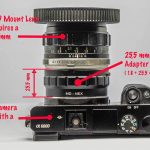
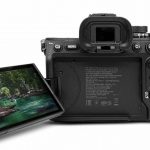
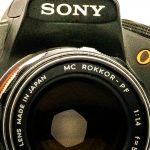


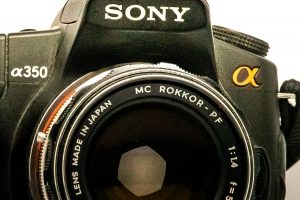
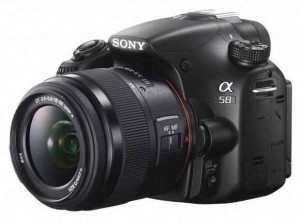
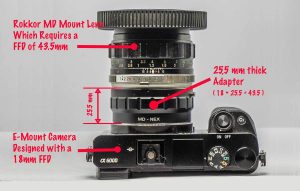


Just use film, you don’t have a noise problem!
I’ve had my A100 for 4 months now. I have read many reviews about the camera and most of the negativity has been about ISO. Granted, it is a problem that Sony needs to address, but when shooting with the camera I always try to keep it at ISO 100 so as not to have noise in my photo’s. If it’s too dark/dim I always use a tripod. This has worked out very well for me. So when using the A100, my advice is just keep the ISO low and use a tripod in lower light. It’s still a great camera and I love it!